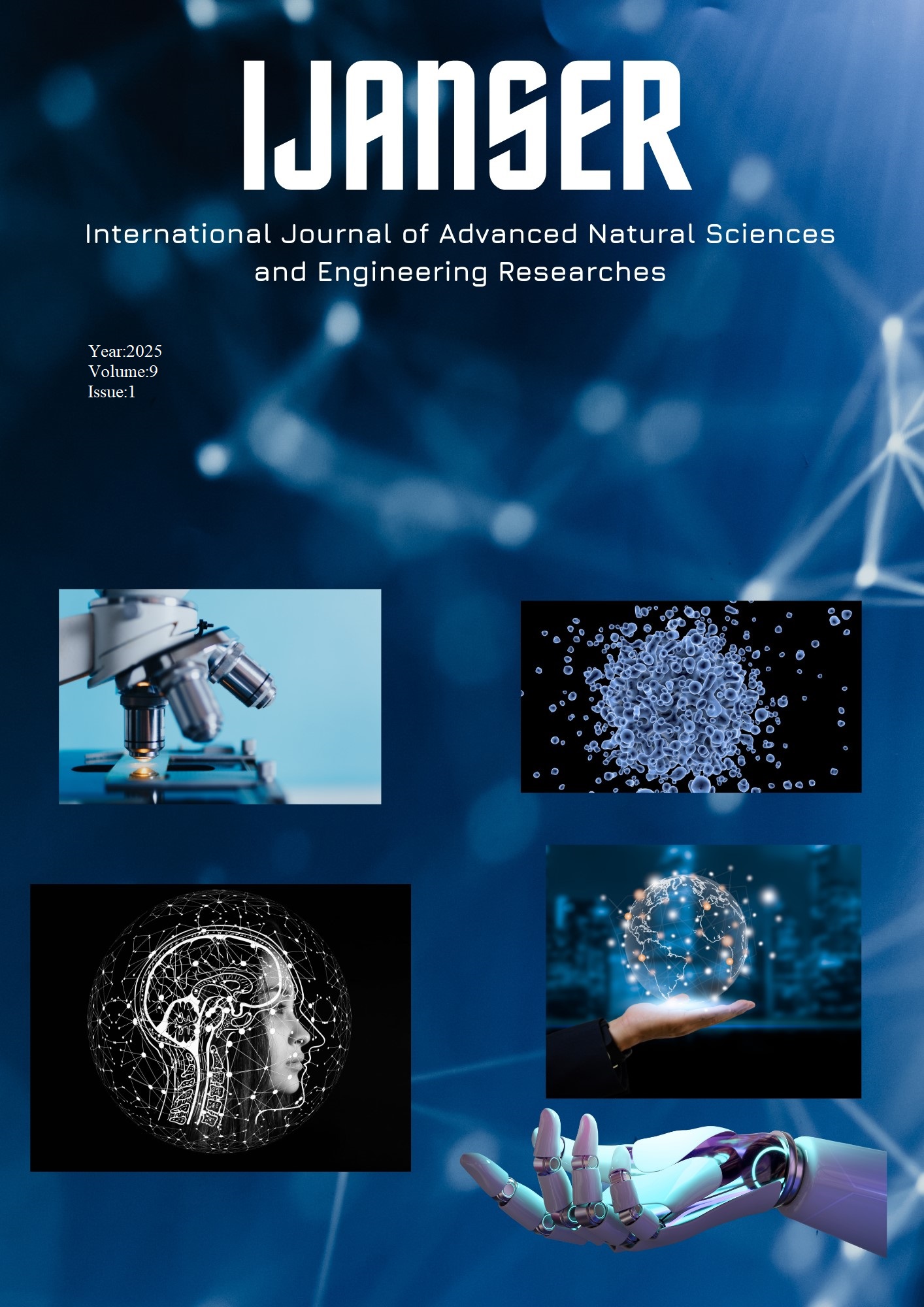Detection of boric acid pesticide residues in agricultural soil using previously prepared SIQDs
Keywords:
Boric Acid, Silica Quantum Dots Siqds, Fertilizers, FluorescenceAbstract
Detection of boric acid pesticide residues in agricultural lands treated with the aforementioned pesticide and selectively detecting them using SIQDs prepared and tested in advance. This is done by preparing a certain concentration of the pesticide in an aqueous solution and testing its fluorescence intensity. Then, preparing a certain concentration of the SIQDs solution and testing the fluorescence intensity. It was found that the fluorescence intensity of the SIQDs is very high, reaching 7 times compared to the fluorescence intensity of the pesticide, which is much lower. The pesticide is detected by measuring the fluorescence intensity of the SIQDs after adding it to the pesticide. 2 ml of the SIQDs solution was taken and added to 2 ml of the pesticide, mixed and shaken for 5 minutes, then the fluorescence intensity signal was measured. It was found that the intensity decreased significantly to become close to the intensity of the pesticide alone, indicating the presence of the pesticide, as it works to reduce the signal intensity as a result of the interaction between the surface of the SIQDs and the pesticide used, which causes extinguishing. It has been practically applied in agricultural lands treated with boric acid.
Downloads
References
G. Van Maele-Fabry, A.-C. Lantin, P. Hoet, and D. Lison, “Childhood leukaemia and parental occupational exposure to pesticides: a systematic review and meta-analysis,” Cancer Causes Control, vol. 21, pp. 787–809, 2010.
N. Simon-Delso et al., “Pesticides néonicotinoïdes. Tendances, usages et modes d’action des métabolites,” 2014.
T. C. Sparks, “Insecticide mixtures—uses, benefits and considerations,” Pest Manag. Sci., 2024.
Y. Zhang et al., “Physicochemical property guidelines for modern agrochemicals,” Pest Manag. Sci., vol. 74, no. 9, pp. 1979–1991, 2018.
S. Hofstetter, A. Beck, S. Trapp, and A. Buchholz, “How to design for a tailored subcellular distribution of systemic agrochemicals in plant tissues,” J. Agric. Food Chem., vol. 66, no. 33, pp. 8687–8697, 2018.
L. Quiros-Alcala, “Potential health effects of pesticides.,” 2015.
E. P. on P. P. P. and their R. (PPR) et al., “Scientific opinion on pesticides in foods for infants and young children,” EFSA J., vol. 16, no. 6, p. e05286, 2018.
R. C. Gilden, K. Huffling, and B. Sattler, “Pesticides and health risks,” J. Obstet. Gynecol. Neonatal Nurs., vol. 39, no. 1, pp. 103–110, 2010.
C. D. Klaassen and M. O. Amdur, Casarett and Doull’s toxicology: the basic science of poisons, vol. 1236. McGraw-Hill New York, 2013.
D. Lawrence, “Chinese develop taste for organic food: Higher cost no barrier to safer eating,” Bloom. News, Int. Her. Trib. Retrieved, pp. 10–25, 2007.
R. Womble, “National Library of Medicine Web Resources for Student Health Professionals,” Oak Ridge Inst. for Science and Education (ORISE), Oak Ridge, TN (United States), 2010.
N. C. Deziel, M. C. Friesen, J. A. Hoppin, C. J. Hines, K. Thomas, and L. E. B. Freeman, “A review of nonoccupational pathways for pesticide exposure in women living in agricultural areas,” Environ. Health Perspect., vol. 123, no. 6, pp. 515–524, 2015.
K.-Y. Cheng, R. Anthony, U. R. Kortshagen, and R. J. Holmes, “High-efficiency silicon nanocrystal light-emitting devices,” Nano Lett., vol. 11, no. 5, pp. 1952–1956, 2011.
L. Nicolle-Mir, “Exposition résidentielle aux pesticides et cancers de l’enfant: nouvelle méta-analyse.,” Environnement, Risques & Santé, vol. 15, no. 4, 2016.
S. M. Stavis, J. A. Fagan, M. Stopa, and J. A. Liddle, “Nanoparticle manufacturing–heterogeneity through processes to products,” ACS Appl. Nano Mater., vol. 1, no. 9, pp. 4358–4385, 2018.





